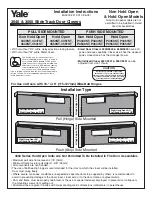
Arc force: It refers to the ascending slope of the current in a short circuit, and it is set as the amperage increases per millisecond in
this machine. The current will ascend from the preset value by this slope after a short circuit occurs(e.g. When the preset current is
100A and the arc force is 20, the current will be 120A 5ms after a short circuit occurs.) If it is still under short circuit when the cur-
rent increases to the allowable maximum value of 200A, the current will not ascend anymore. If the short circuit status lasts for 0.8s
or more, the machine will enter into the electrode sticking process: wait for the disconnection of the electrode under low cur-rent.
Arc force should be set according to the electrode diameter, preset current, and technical requirement. If the arc force is big, the mol-
ten drop can be transferred quickly, and electrode sticking seldom occurs. However, too big arc force may lead to excessive spatter.
If the arc force is small, the spatter will be little, and the weld bead will be shaped well. However, too small arc force may lead to soft
arc and electrode sticking. Therefore, the arc force should be increased when welding with a thick electrode under a low current. In
general welding, the arc force may be set at 0~40A.
Adjustable Arc Force:
Hot start is a feature that pumps up the amperage for a short time when you start the arc. Higher amperage helps to start the arc
easier without sticking the electrode to the base metal. A hot start helps warm the base metal to achieve deep penetration at the
weld start.
Adjustable Hot Start
Electrode Size ø mm/Inch
Current Range (Amps)
3/32" or 0.09" (2.4mm)
60~95
1/8" or 0.125" (3.2mm)
100~130
11/64" 0r 0.15" (4.0mm)
130~165
13/64" or 0.19" (5.0mm)
165~260
Built-in VRD
The voltage reduction device (VRD) is a hazard reduction device that lowers the welder's open circuit voltage (OCV) to prevent elec-
tric shock from welding current. A VRD is usually equipped with a stick welding machine in wet environments or conductive confined
spaces.
YesWelder CT2050 has a VRD feature embedded in this welder and activates when the welder is on. It reduces the voltage of the
open circuit to a safer level, thus reducing the chances of electric shock in case the wrong connection is for cutting the torch when
the OCV is high in Cutting.
Ÿ
The VRD function will promptly activate when the electrode does not touch the workpiece.
Ÿ
When the electrode touches the workpiece to start welding, the VRD will be released.
Ÿ
when welding is completed and leaves the workpiece, the VRD will be on again.
Welding Current Guide
Choosing the correct current for a particular welding job is critical. If the welding current is too low, the user will experience difficulty
in striking and maintaining a stable arc. The electrode tends to stick to the workpiece, penetration is poor, and the weld ends up with
a rounded profile. If the current is too high, the problems include burning through the base metal, undercut, and excessive spatters.
The standard welding current for a particular job should be the maximum that won't burn through the base metal, overheat the tung-
sten electrode, or leave spatters sticking to the workpiece surface.
The table shows current ranges generally recommended for a general purpose type E6013 electrode.
34
Summary of Contents for CT2050
Page 55: ...15 WIRING DIAGRAM 52 ...
Page 56: ...www YesWelder com V2 01 ...
















































